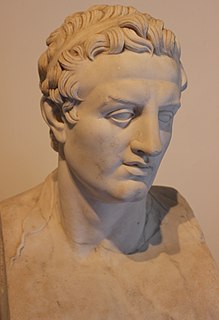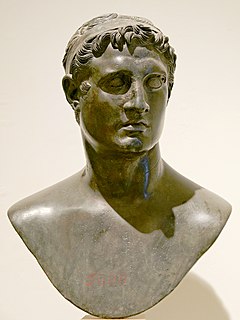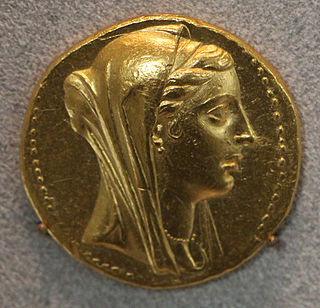
The 3rd century BC started the first day of 300 BC and ended the last day of 201 BC. It is considered part of the Classical era, epoch, or historical period.
This article concerns the period 229 BC – 220 BC.

This article concerns the period 309 BC – 300 BC.
During the 290s BC, Hellenistic civilization begins its emergence throughout the successor states of the former Argead Macedonian Empire of Alexander the Great, resulting in the diffusion of Greek culture throughout the Levant and advances in science, mathematics, philosophy, etc. Meanwhile, the Roman Republic is embroiled in war against the Samnites, the Mauryan Empire continues to thrive in Ancient India, and the Kingdom of Qin in Ancient China, the one which in the future will conquer its adversaries and unite China, begins to emerge as a significant power during the Warring States period.
This article concerns the period 279 BC – 270 BC.
This article concerns the period 269 BC – 260 BC.
This article concerns the period 259 BC – 250 BC.
This article concerns the period 249 BC – 240 BC.
This article concerns the period 239 BC – 230 BC.
Year 221 BC was a year of the pre-Julian Roman calendar. At the time it was known as the Year of the Consulship of Asina and Rufus/Lepidus. The denomination 221 BC for this year has been used since the early medieval period, when the Anno Domini calendar era became the prevalent method in Europe for naming years.

Ptolemy III Euergetes was the third pharaoh of the Ptolemaic dynasty in Egypt from 246 to 222 BC. The Ptolemaic Kingdom reached the height of its military and economic power during his kingship, as initiated by his father Ptolemy II Philadelphus.
Year 245 BC was a year of the pre-Julian Roman calendar. At the time it was known as the Year of the Consulship of Buteo and Bulbus. The denomination 245 BC for this year has been used since the early medieval period, when the Anno Domini calendar era became the prevalent method in Europe for naming years.
Year 278 BC was a year of the pre-Julian Roman calendar. At the time it was known as the Year of the Consulship of Luscinus and Papus. The denomination 278 BC for this year has been used since the early medieval period, when the Anno Domini calendar era became the prevalent method in Europe for naming years.

Ptolemy II Philadelphus, also known posthumously as Ptolemy the Great, was the pharaoh of Ptolemaic Egypt from 283 to 246 BC. He was the son of Ptolemy I, the Macedonian Greek general of Alexander the Great who founded the Ptolemaic Kingdom after the death of Alexander, and Queen Berenice I, originally from Macedon in northern Greece.

Berenice II Euergetis was ruling queen of Cyrenaica from around 250 BC and queen and co-regent of Ptolemaic Egypt from 246 BC to 222 BC as the wife of Ptolemy III Euergetes.

Antigonus III Doson was king of Macedon from 229 BC to 221 BC. He was a member of the Antigonid dynasty.

Magas of Cyrene was a Greek King of Cyrenaica. Through his mother’s second marriage to Ptolemy I he became a member of the Ptolemaic dynasty. He managed to wrest independence for Cyrenaica from the Greek Ptolemaic dynasty of Ancient Egypt, and became King of Cyrenaica from 276 BC to 250 BC.
Demetrius I the Fair or the Handsome, known in modern ancient historical sources as Demetrius of Cyrene, was a Hellenistic king of Cyrene, who succeeded Magas I.

Stratonice or Stratonica of Syria was Queen of the Seleucid Empire from 300 BC until 294 BC and from 281 BC until 261 BC.
Apama II, sometimes known as Apame II was a Syrian Greek princess of the Seleucid Empire and through marriage was a queen of Cyrenaica.








